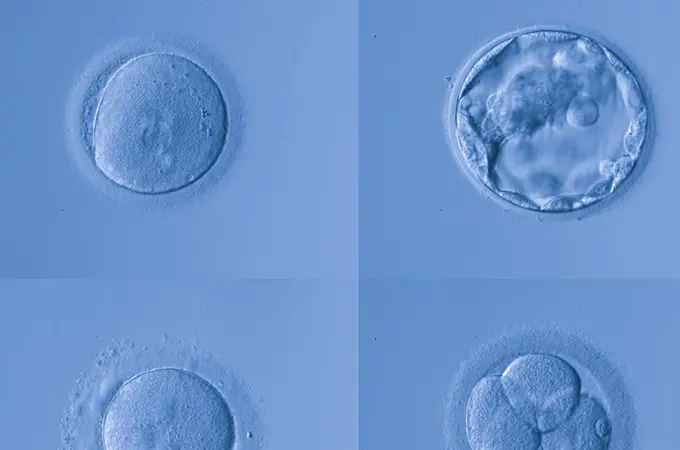New Study Provides Better Predictions for Intrauterine Insemination (IUI) Pregnancy Rates Based on the Number of Moving Sperm
Intrauterine insemination (IUI) is one of the most basic forms of fertility treatment and has provided many women and men who have struggled to conceive with the ability to build their families. Compared with more intensive treatments such as in vitro fertilization (IVF), IUI comes at a lower financial cost but, in general, is associated with lower pregnancy rates. Couples with infertility, in whom tubal and severe male factor have been excluded, generally face the decision of whether to start with IUI or IVF. While some factors, such as female age, have been known to influence IUI outcomes, clinicians have had few tools at their disposal to tailor counseling regarding chances of success with IUI. Shady Grove Fertility has recently completed a study to help couples decide whether IUI is the right initial fertility treatment for them and will present key findings at the American Society for Reproductive Medicine (ASRM) Annual Meeting (Baltimore, MD, October 17–21, 2015).
Sperm Count Predicts IUI Pregnancy Rates
In addition to maternal age, sperm count has been known to have an impact on pregnancy rates with IUI treatment; however, precise predictions based on sperm count were not possible, as limited data were available.
Based on a retrospective study of over 47,500 IUI cycles, Shady Grove Fertility has developed a model to predict IUI success based on total motile sperm count in the sample used for IUI.
Before an IUI cycle, most patients will have a sperm wash to prepare the sample for insemination. At this time, the total motile sperm collected are counted. The sperm count can range from nearly zero to tens of millions. It seems obvious that the higher the sperm count, the higher the chances of pregnancy—but just how high, or low, are the chances?
For the average couple in this study who underwent IUI with a post-wash total motile sperm count of at least 9 million, the chances of a clinical pregnancy with one IUI cycle using “washed sperm” was 16.9 percent. If the count was above 9 million the same chances of success were observed. In other words, it didn’t matter if the sample used for insemination had 9 million, 10 million, or 20 million moving sperm, success rates didn’t increase further.
However, for patients with sperm counts on the lower end of the spectrum, success rates steadily fell as the sperm count decreases from 9 million.
| Total Motile Sperm Count (millions) | Number of Insemination Cycles | Number of Clinical Pregnancies | Clinical Pregnancy per Cycle |
| <0.25 | 123 | 3 | 2.40% |
| 0.25-0.49 | 180 | 5 | 2.80% |
| 0.50-0.99 | 355 | 17 | 4.80% |
| 1.00-1.99 | 904 | 62 | 6.90% |
| 2.00-3.99 | 2463 | 249 | 10.10% |
| 4.00-4.99 | 1465 | 166 | 11.30% |
| 5.00-5.99 | 1499 | 186 | 12.40% |
| 6.00-6.99 | 1676 | 230 | 13.70% |
| 7.00-8.99 | 3257 | 479 | 14.70% |
| 9.00-9.99 | 1621 | 274 | 16.90% |
| > 10.00 | 34010 | 5649 | 16.60% |
Determining Total Motile Sperm Count
At Shady Grove Fertility, a semen analysis is part of any couple’s initial fertility work-up. This helps determine if male factor infertility may be playing a role in the couple’s inability to conceive, as well as providing insight into which treatment option may provide the best chance of pregnancy. When considering expected total motile sperm count for an IUI, two important variables need to be accounted for: 1) total motile sperm count from the baseline semen analysis, and 2) the impact that sperm washing (a procedure in which a sperm sample is concentrated that is necessary for IUI) will have on that number.
What This Means for Patients
Based on the largest study of its kind, physicians can now counsel patients about their potential success rates with IUI and whether it is the right treatment option for them. When a semen analysis shows a borderline or low sperm count, patients can undergo a diagnostic semen wash to give a more accurate expectation of total motile sperm count expected to be obtained for IUI treatment, and thereby obtain a refined understanding of their chances of success. Another SGF study being presented at the 2015 ASRM meeting looked at factors that may be able to predict post-wash total motile sperm count and found that baseline sperm morphology is likely the most important predictor.
Together, these studies demonstrated that post-wash total motile sperm count can provide valuable decision making information to couples deciding between IUI and IVF treatment.
With more accurate, individualized expectations, patients can make informed decisions about treatment, which was the Shady Grove Fertility Research team’s primary goal in conducting this study
About the American Society for Reproductive Medicine (ASRM) Annual Meeting
ASRM 2015 is the premier National education and research meeting for the field of Reproductive Endocrinology and Infertility. Plenary lectures will address state-of-the-art issues in reproductive medicine and science.
The outlook for patients with infertility continues to brighten year after year, thanks to the thousands of professionals who dedicate their lives to improving outcomes for fertility treatment. The range of their expertise and influence draws from doctors, nurses, and researchers to business experts, pharmaceutical companies, advocacy organizations, and, of course, patients themselves. Shady Grove Fertility continues to play a leading role in clinical research and leadership in practice policy at the national level.
If you would like to schedule an appointment with a fertility specialist, please speak with one of our New Patient Liaisons at 877-971-7755.





